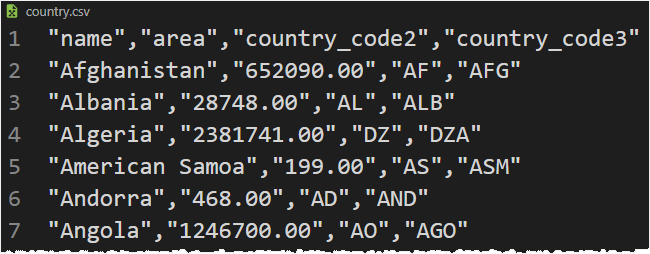
#Python csv writer example code#
In this code example, we first import the csv module. To read one column CSV in Python, you can use the csv.DictReader() function to read CSV files as dictionaries. The row variable is a list of values to write to the new line in the CSV file.īy using these simple examples, we can easily read and write to CSV files line by line in Python. Then we create a csv.writer object, which we can use to write a new line to the CSV file using the writerow() method. In the above example, we open the CSV file example.csv in 'append' mode and assign it to the csvfile variable. With open('example.csv', mode='a', newline='') as csvfile: Each row in the loop is represented as a list of values. Then we create a csv.reader object, which we can iterate over line by line using a for loop. In the above example, we open the CSV file example.csv and assign it to the csvfile variable. With open('example.csv', newline='') as csvfile: To read a CSV file in Python line by line, we can use the built-in csv module. The index=False parameter is used to remove the default row index column from the CSV file. This code creates a CSV file with the same format as the previous example.
#Python csv writer example how to#
This example shows how to write a dictionary of values to a CSV file.

We then loop through the rows of the file using a for loop and print each row to the console. In this example, we use the csv.reader() function to read the contents of the CSV file named example.csv.

To open and read a CSV file in Python, you can use the built-in csv module. We will also cover some advanced topics, such as handling large CSV files, dealing with missing data, and performing operations on CSV data using NumPy and Pandas libraries. In this article, we will explore the basics of working with CSV files in Python, including reading, writing, and manipulating data. Python is a powerful programming language that provides several tools and libraries to work with CSV files. CSV (Comma Separated Values) files are one of the most common data formats used in data science, machine learning, and analytics.


 0 kommentar(er)
0 kommentar(er)
